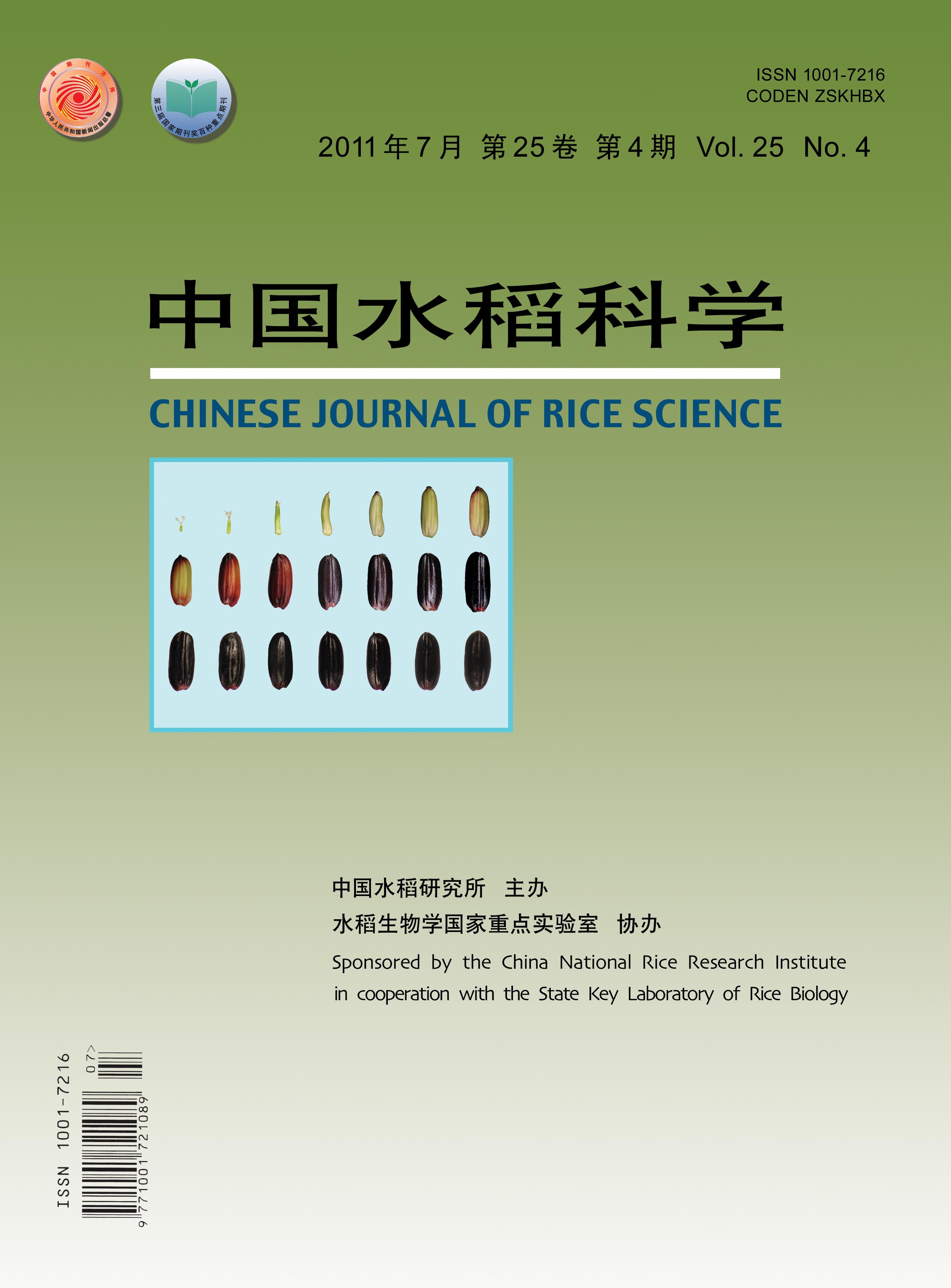|
|
Effects of Phosphorus Levels on Grain Yield and Quality of Super Rice Nanjing 44
GONG Jin-long1 , ZHANG Hong-cheng1, * , LI Jie1 , CHANG Yong1 , DAI Qi-gen1 , HUO Zhong-yang1 , XU Ke1 , WEI Hai-yan1 , LI De-jian2 , LI Bing-wei2 , SHA An-qin2 , ZHOU You-yan2 , LUO Xue-chao2 , ZHU Zhen3
2011, 25(4):
447-451.
DOI: 10.3969/j.issn.1001-7216.2011.04.017
Effects of phosphate levels on grain yield and quality were studied with a super rice Nanjing 44 as material. With the increasing phosphate(P2O5) level (within the range of 0.0-225.0 kg/hm2), seedsetting rate, 1000grain weight increased firstly and then decreased, while the numbers of panicles and total grains per panicle followed a declining tendency accordingly. The quality indexes and phosphate levels were not significantly correlated, but phosphate fertilizer application increased brown rice rate, head rice rate, chalkiness area and chalkiness degree and reduced peak viscosity, hot viscosity, breakdown, cool viscosity and consistence. However, milled rice rate, chalky grain rate, protein content, amylose content, pasting temperature, setback and peak time were not significantly correlated with phosphate levels. Phosphorus application increased chalkiness mainly by increasing chalkiness area. Morever, chalkiness area, chalkiness degree and setback were deeply affected by phosphate level, while brown rice rate, peak time and pasting temperature were almost immune to phosphate level. In consideration of the grain yield and quality, applicable phosphate level(85.7 kg/hm2 for the soil with medium or high fertility) was the best choice for high yield and nitrogen use efficiency. Otherwise, it would worsen the ecological environment.
|

